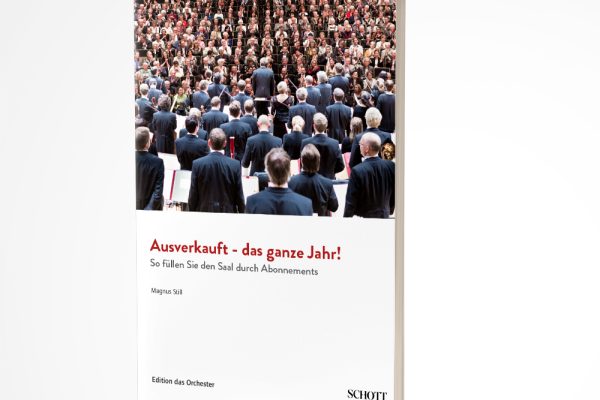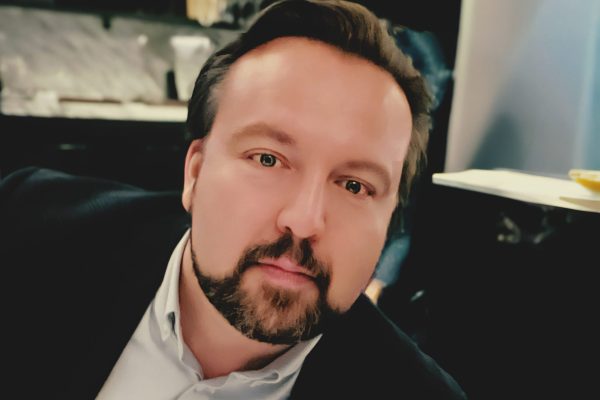More Recipes for Success
More Recipes for Success
What does the situation of orchestras look like from the perspective of someone outside them, but who works closely with them? The right person to answer this is Magnus Still, a manager and advisor specializing in audience growth. He has written two books on the subject: Effective Marketing by Classical Music Promoters and Fill Every Seat – EVERY Week.
Still agrees with Thomas Schmidt-Ott on the importance of broadening the funding base. According to him, the budget cuts in Finland and Germany should come as no surprise.
“Through the demographic pyramid, globalization, and the rise of populist parties, it has been clear that public finances are under pressure. The question was only when the cuts would come. The funding base should have been expanded decades ago, but few were prepared for this,” Still says.
He compares the typical revenue models of orchestras in different countries. In the Nordic countries and Central Europe, the common ratio is 85% public funding, 10% subscription and single ticket revenues, and 5% from tours, gigs, and royalties etc. In the U.S., it is usually 5% public support, 30% subscription revenues, 20% single ticket sales, 10% sponsorships, 30% donations, and 5% from tours, gigs, and royalties.
“I personally like the Swiss model, with 40–60% public support, 20% from subscription and single ticket sales, 20% from donations, 10% sponsorships, and 10% from tours and other sources. The foundation of public support is much better than in the U.S., but the revenue streams are more diversified. Therefore, if there are cuts, they don’t lead to abrupt catastrophes, as there’s a risk now in Finland and Germany.”
“Substantial ticket revenues force orchestras to be more attuned to audience reactions than in Finland, for example. But when an orchestra isn’t overly reliant on ticket revenues, it can also dare to produce more interesting programs outside the mainstream. And it doesn’t hurt to also remain relevant to wealthier audiences, as they, too, can become arts patrons.”
In terms of content, Still emphasizes that most important is for orchestras to develop their own identity through program planning and services and to maintain an ongoing dialogue with their audience. “But confidence in and passionate fire for what you’re doing are key because this enthusiasm is contagious. On top of that, you must be able to communicate effectively and create sufficient resources for it.”
When it comes to reaching new audiences, Still believes it’s crucial to clearly define what is meant by “new audience.”
“If the goal is high attendance rates while still presenting challenging repertoire, not just mainstream pieces, then a strong subscriber base is essential. At least nowadays, in Europe and North America, this means audiences who are 60+ years old, highly educated, and middle-class. Many see this as a big problem, but trying to fight against it is an uphill battle, requiring millions in marketing budgets.”
“If you want slightly younger audiences, the best strategy is to offer somewhat more attractive programs (‘entry points’), collect contact information, and invite them back in a few months. If you’re aiming for 15–40-year-olds, you must recognize that they may very well enjoy classical music as much as older audiences, but the busyness of their lives often prevents them from attending concerts. Nevertheless, they should still be remembered with events like park concerts and singles’ evenings etc.”
“It’s a completely different matter when working with children and youth. They usually don’t decide for themselves to attend; the decision lies with their parents, grandparents, or teachers. But if they have meaningful experiences, the threshold to return as adults becomes much lower.”
Magnus Still is not worried about the future of classical music. “Perhaps some orchestras will die out in the coming years, which is very unfortunate for the musicians, audiences, and communities. But classical music is such an extraordinary thing—artistically, sensually, socially, communally, and intellectually—that the essence will live on. There will always be some enthusiast in every community who will rediscover it. Hopefully, this transition can be managed in a way that makes sense for the bigger picture.”
Magnus Still
Article published in Rondo Classic Magazine in January 2025. Translated from the original Finnish.



